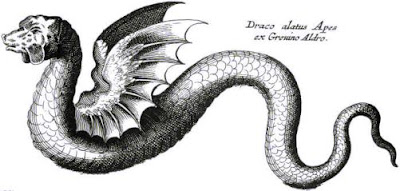
For thousands of years, humans everywhere have brought mythic creatures to life in stories, songs and works of art. The exhibition
“Mythic Creatures: Dragons, Unicorns & Mermaids”, at the American Museum of Natural History, in New York, try to show us how tales of Griffins, Giants and Cyclopes arose from interpretation of the fossil evidence by the ancients. These are some of the most fascinating facts:
1. Cyclops and elephants
In 1924, while travelling through Mediterranean islands, Austrian paleontologist Othenio Abel unearthed several dwarf elephant skulls and concluded that ancient Greeks may have interpreted the large trunk opening in the fossils as the massive, single eye-socket of one eyed human-like creatures: cyclops. Many ancient Greeks thought the same thing: when they found bones like these from other kinds of mammoths, they often interpreted them as the bones of giants.
2. Dinosaurs and dragons
Ancient peoples all over the world have told of unusual, reptile-like creatures that once roamed the earth. Many called them "dragons" and most of the descriptions sound similar to dinosaurs. In 1335 the cranium of a wooly rhinoceros from the ice-age was found in a gravel pit near Klagenfurt, Austria. It was instantly interpreted as the skull of a dragon.
3. Sirens and manatees
Manatees and sea cows were frequently mistaken for mermaids by early explorers. Sailing near the Dominican Republic in 1493, Christopher Columbus described in his log some "female forms" that "rose high out of the sea, but were not as beautiful as they are represented."
4. Unicorns and narwhals
In the Middle Ages, Danish sailors and other merchants from the North brought narwhal tusks to European markets, where buyers considered them to be valuable, magical remains of elusive unicorns. From then on, nearly all descriptions of unicorn horns are consistent: they are long, white and spiraled, just like a Narwhal tooth.
5. Protoceratops and griffons
Scythian nomads who prospected for gold in the Gobi Desert told the first stories about griffons — a lion-sized, four-legged, winged animal with a "cruel sharp beak" — that ferociously guarded its hoard of gold. Twentieth-century excavations in the Gobi have unearthed Protoceratops and Psittacosaurus skeletons, both beaked dinosaurs, from the same regions where the nomads prospected. It's quite possible that gold seekers made astute observations about their skeletal structures and speculated on the appearance of the live animal.
6. Sea monsters
Folklore and early travelers' tales featured mermaids aplenty, and the old maps of the known world, were always fringed with sea monsters that many believed inhabited the surrounding waters. One of the most horrible creatures was de Kraken, which might have evolved from sightings of enormous squids, one of which was recently found in New Zealand, with single arms over 19 feet long.
More info and sources:
1,
2,
3,
4,
5,
6,
7,
8,
9
 For thousands of years, humans everywhere have brought mythic creatures to life in stories, songs and works of art. The exhibition “Mythic Creatures: Dragons, Unicorns & Mermaids”, at the American Museum of Natural History, in New York, try to show us how tales of Griffins, Giants and Cyclopes arose from interpretation of the fossil evidence by the ancients. These are some of the most fascinating facts:
For thousands of years, humans everywhere have brought mythic creatures to life in stories, songs and works of art. The exhibition “Mythic Creatures: Dragons, Unicorns & Mermaids”, at the American Museum of Natural History, in New York, try to show us how tales of Griffins, Giants and Cyclopes arose from interpretation of the fossil evidence by the ancients. These are some of the most fascinating facts:



















